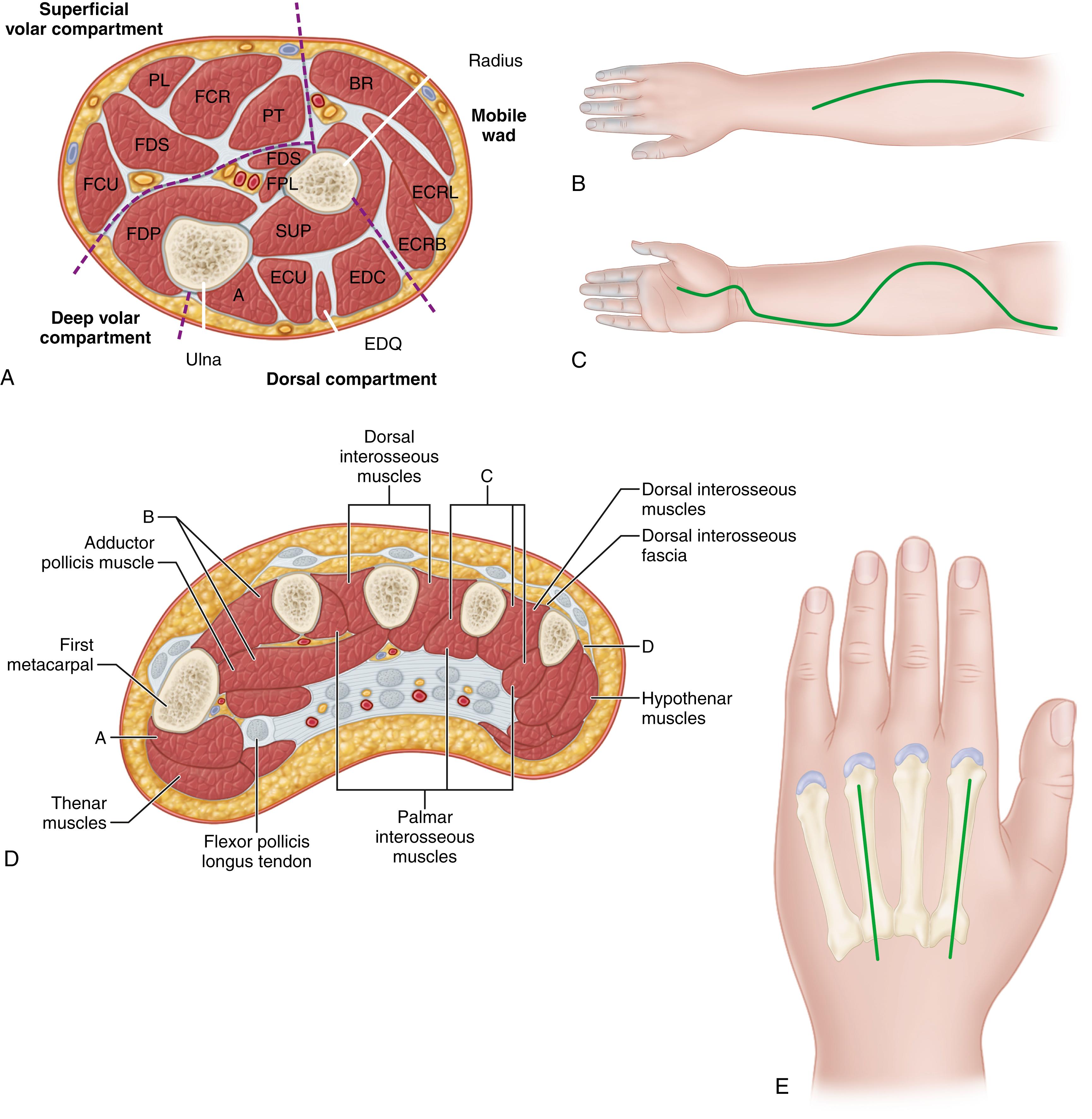Physical Address
304 North Cardinal St.
Dorchester Center, MA 02124
Compartment syndrome in either upper or lower extremity is often underestimated and may have detrimental consequences for functioning of the involved extremity. Muscle groups in the extremities are separated by fascial sheaths to ensure that muscles move in the right vector and achieve maximal efficiency during contraction. Fascial sheaths also provide additional surface area for muscle origins because bone alone does not offer enough surface area. Fascial sheaths protect neurovascular bundles.
Groups of muscles in the arms and legs, together with blood vessels and nerves, are contained in compartments surrounded by non-elastic fascia and/or bone; therefore, whenever bleeding and/or edema occur, increased pressure is inevitable. This increased pressure can harm the intra-compartmental soft tissues, leading to detrimental consequences. Focusing on the different compartments in both the upper and lower extremities a distinct architecture can be recognized.
In this chapter we address the anatomy of both upper and lower extremities to illustrate the rationale for the occurrence of compartment syndrome, its consequences, and management strategies.
The thickness of the fascia is determined by the amount and direction of the applied force. Comparing the fascia of the lower leg (i.e., fascia cruris) to the fascia of the forearm (i.e., fascia anti-brachii), not only can a significant difference in thickness be noted, favoring the fascia cruris, but also a difference in the direction of the fascia fibers. The fascia cruris fibers run in a circular direction, whereas the fibers of the fascia antibrachii do not have a uniform shape or direction. This difference can be explained by the constant contraction and relaxation of the calf muscles, which is of much higher amplitude than that of their forearm counterparts.
The forearm contains three compartments: dorsal, volar, and mobile wad compartments. The dorsal compartment contains the abductor pollicis, extensor pollicis longus, extensor carpi ulnaris, extensor digiti minimi, and extensor digiti communis muscles. Inferior to the muscles, the radius and ulna can be found, separated by the interosseous membrane. The volar compartment is separated into superficial and deep muscles. The deep muscles include the flexor pollicis longus, flexor digitorum profundus, and pronator quadratus. The superficial muscles are the palmaris longus, pronator teres, flexor digitorum superficialis, flexor carpi ulnaris and radialis. The ulnar and radial bone and the interosseous membrane border the compartment dorsally. Volar borders are the subcutaneous antebrachial fascia. This fascia also separates the volar compartment from the lateral compartment (i.e., the mobile wad ), which holds the brachioradialis, extensor carpi radialis brevis and longus muscles ( Fig. 51.1A–C ).
Looking at the different osteofascial compartments of the hand, 10 separate compartments can be distinguished: four dorsal interossei compartments, three palmar interossei compartments, the adductor pollicis compartment, and the thenar as well as hypothenar compartments ( Fig. 51.1D, E ) .

Anatomically, the lower leg can be divided in four compartments: the deep and superficial posterior compartments and the lateral and anterior compartments.
The fascia cruris, tibia, fibula, and interosseus membrane surround the anterior compartment . The anterior tibial muscle, extensor hallucis longus, and extensor digitorum longus are the muscles in this compartment. The anterior tibial artery and veins run along these muscles distally and the deep peroneal nerve innervates them. The lateral compartment comprises the long peroneal and brevis muscles and the common peroneal nerve proximally. The crural fascia, intermuscular septum fascia, and fibula compartmentalize these structures. The superficial posterior compartment is separated from the deep compartment by the transverse intermuscular septum and is ensheathed by the fascia cruris. This compartment holds space for the plantar, soleus, and gastrocnemius muscles. The deep posterior compartment is encircled by the already mentioned transverse septum, the tibial and fibular bones, and the interosseus membrane; it also contains the tibial nerve and posterior tibial and peroneal arteries and veins. Muscles that are located in this compartment are the posterior tibial, flexor hallucis longus, and flexor digitorum longus muscles.
Become a Clinical Tree membership for Full access and enjoy Unlimited articles
If you are a member. Log in here